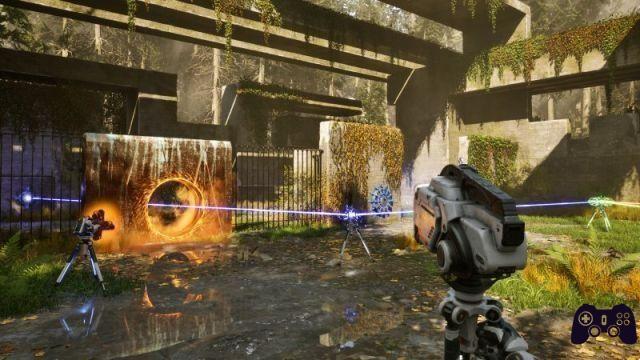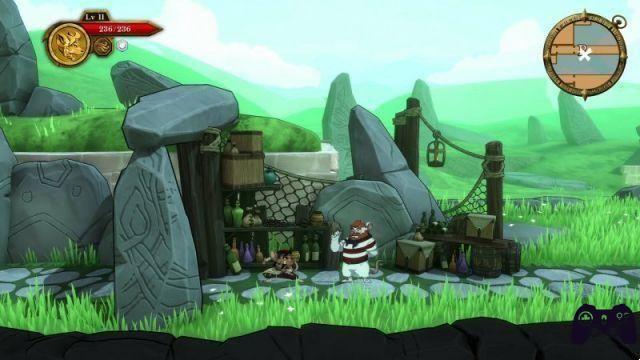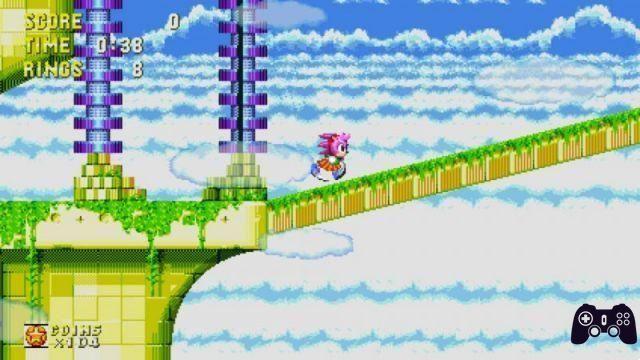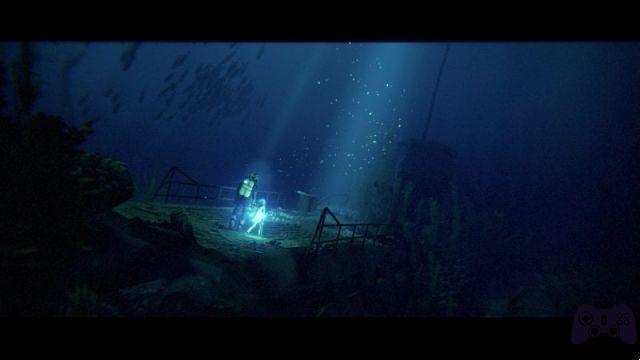Humanity is already extinct, but from its ashes was born a civilization of robots that call themselves humans and that have recovered part of their culture, trying to understand their mistakes so as not to repeat them. The player is the thousandth of the new humans produced within a futuristic city, the last planned, received with great celebration by the community. However, during the celebrations for his birth, the appearance of a virtual simulacrum called Prometheus invites him to head to a secret island, where he will find a mega structure conceived as an immense puzzle waiting for him, welcoming him into the labyrinthine corridors of it. . They invite us to reflect on the nature of existence by asking questions about ourselves, the civilization that generated it, and the nature of the universe.
To find out whether or not it is worth accepting the challenge, read the Talos 2 Tenet Review, an excellent sequel that builds on its predecessor to expand and improve it, while also trying to make it more accessible.
the island

The image that came to mind when trying The Talos Principle 2 is that of two old philosophers playing chess arguing between one move and another, in which moves and words mix into an inseparable whole, forming a single discourse. After all, The story is written by Jonas Kyratzes (The Eternal Cylinder, Clash: Artifacts of Chaos), Tom Jubert (The Swapper, Subnautica) and Verena Kyratzes (The Hand of Merlin, Serious Sam 4) as if it were a dialogue between the different positions on the field, in which the answer is never obvious or definitive and in which the player's participation occurs through a series of multiple choice dialogues, in which he can choose between different points of view. expressed on some general issues. Obviously there is a precise development to follow, but everything is diluted in a structure that leaves time for reflection and opens up to research, in which the breadth of the maps is inherent to the underlying theme of the experience.
Always played in first person, The Talos Principle 2 picks up where The Talos Principle left off, both because its assumptions are contained in the previous chapter, and because the entry phase takes place in an area that follows the original, with a resurgence of the Egyptian theme in architecture and decorative elements, in which we have to resolve some riddles. in sequence to learn how to play and, therefore, "born" into what will be the real gaming experience. Therefore, we find ourselves wandering around the city of the new humans, where, by talking to the other robots and accessing some structures, in particular a huge museum, we can reconnect the threads between the two chapters and, when we are satisfied , decide to leave for our new journey. This is a phase to which we dedicated more time than we thought because it was constructed in a really interesting way, between the re-proposition of some of the original puzzles for illustrative purposes and the construction of a real exhibition itinerary that immediately opens up certain questions.

Satisfied with the visit, we decided to embark on the journey to understand what awaits us on the island of Prometheus. Here we discover that to access the megastructure we must activate the towers that surround it, using an automated transportation system to move between the different areas and solving at least eight puzzles in each area, excluding some secret puzzles. Once this is done, we will have to build bridges using large tetrominoes to reach the towers. Please know that we are not alone in our journey. TRUE, solving the puzzles is up to us, the thousandth, but our companions will deal with other matters that will become more important as the story develops. In addition, we will be able to talk to each other, both for strictly operational issues and to discuss what we have discovered. Some issues will also be addressed in the chats between robots, accessible from the official datapad, in which we will often be asked to take a position on issues raised by exploration or life in the city.
In all this, you will also find space Secret associations, personal dramas, existential doubts, etc..
Gameplay

As happened in The Talos Beginning, also in the sequel The game design follows the kishōtenketsu philosophy. So for each set of puzzles we generally have an introductory outline that allows the player to access the new mechanics/tools by following built-in hints (visual, compositional, architectural and other, however, there are no written tutorials or anything more explicit), consequently , they are developed with some subsequent puzzles, up to the advanced ones that propose an inversion in the way of using the tools, with the end of the section that solves the whole with a larger and more ingenious puzzle, which to be solved forces the player to say basically all the skills developed up to that point.
Nothing miraculous: it is a way of conceiving video games introduced into the discourse on video games by Shigeru Miyamoto in the 80s, as some would say, "lesson 1" of game design, which we have seen in recent times with Cocoon, but which we also find in games like Little Inferno, Super Mario Galaxy and many others (particularly the game puzzle), obviously declined according to the genre of the work.

In Talos Tenet 2, which is basically a puzzle game with an adventure framework, it works particularly well because, aside from the prologue, The learning phase extends throughout the entire experience., considering the constant introduction of new puzzle tools. The same general structure of the game is designed in a kishōtenketsu key, with the tools that are proposed again in the advanced stages and intersect with the others, to produce inversions in the logic of their use practiced up to that moment. This way of conceiving video games serves to give the illusion of a natural progression within the adventure, so that the player does not know that he is still guided and helped by the design of the different elements.
More exploration

Unlike the first chapter, in The Talos Principle 2 the game world is larger and can be explored more freely. If you wish, it is possible to move between the different areas, after having unlocked them, solving the puzzles in the desired sequence. They are well circumscribed within specific spaces, which however must be sought by navigating through mazes of corridors, bridges, suspended platforms, etc. Nothing complicated, because navigation is supported by signs that indicate where to go to find a certain puzzle and clearly show which ones have already been solved and which ones are still awaiting our visit. From the point of view of user experience, the work done by Croteam is truly impeccable, with gameplay that manages to convey a certain feeling of bewilderment at the same time, without really getting us lost.
In this sense, The Talos Principle 2 was successful involve consistently throughout the approximately thirty-five hours it took us to reach the end. However, it must be said that we found the puzzles generally simpler than those in the first chapter, despite the difficulty peaks of the special ones.

The result is that, despite an acceptable level of challenge, we never felt frustrated by the game, which is good for the flow, but at the same time we were left with the feeling that some tools could be exploited further, that is That is, to create more complex puzzles. It must be said that many players were prevented from reaching the end of The Talos Principle precisely because of the difficulty of some puzzles; Therefore, we imagine that the choice to make the sequel more accessible from this point of view was motivated by the desire to make the game fully accessible to more people. It is also true that there are many enigmas and that in some cases, despite being within everyone's reach, the solutions to be adopted are brilliant and finding them gives great satisfaction.
Talos Principle 2 is also excellent from the point of view technical, between settings rich in details, architecture that mixes past and future, integrating perfectly with the natural landscape of the island, and a judicious use of various modern effects (after all, it is a puzzle game), for a truly rich and visually fascinating. . Even the robot models are very well done, despite being modeled after a single model. After all, it's one of the game's themes, so it can fit in there. Applause also for the soundtrack, which delicately accompanies the player on his journey towards the megastructure, leaving him the appropriate space in the most reflective moments.
Conclusions
Tested version PC with Windows digital delivery Steam, epic games store, GoG, playstation store, Xbox Store Price 28,99 € Holygamerz.com 9.0 Readers (17) 8.7 your voteThe Talos Principle 2 is the perfect sequel, expanding on the original game and thinking about the problems it had to improve as much as possible. It is well written, has clever, if in some cases too easy, puzzles, and involves skillfully mixing its elements from start to finish. Like the first chapter, it does not leave anyone indifferent, opening up many interesting questions that deserve to be addressed. Alternatively, it could just be a pleasant walk between one puzzle and another... After all, what's wrong?
PRO
- intriguing story
- Ingenious puzzles
- Excellent design
AGAINST
- For those who have finished the first one, the puzzles may be a little easy.






